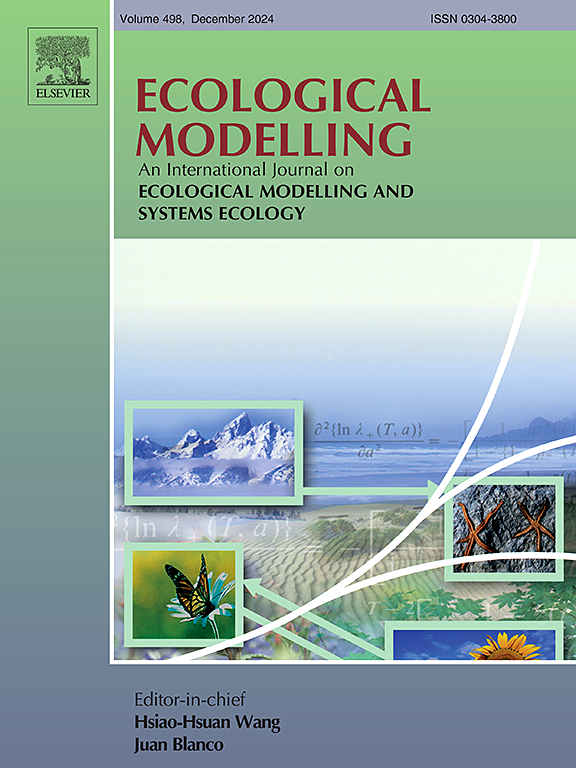Response of California condor populations to reintroductions, reinforcements, and reductions in spent lead ammunition pollution
IF 2.6
3区 环境科学与生态学
Q2 ECOLOGY
引用次数: 0
Abstract
The California Condor (CACO; Gymnogyps californianus) is a critically-endangered apex scavenger with multiple reintroduction sites providing population reinforcement. Spent lead ammunition pollution in CACO food (i.e., carrion and gut piles) was most likely responsible for the decline of CACO populations in the twentieth century and continues to be the leading source of condor mortality. To aid condor recovery decisions for the California population, numbering approximately 200 in early 2024, we present results from a female-only, individual-based life cycle model. We simulated future CACO population size under each of 25 scenarios representing combinations of 5 levels of reintroductions of captive-bred CACO released in California, and 5 levels of lead reduction, projected over a 25-year forecast. Under the scenario of no change in current reinforcements or lead occurrence, CACO populations are projected to increase to 259 females; under the worst-case scenario of halting all reinforcements and no decrease in lead pollution, populations are projected to decline to 49 females; and under the best-case scenario of fully-enhanced reinforcements and complete elimination of lead pollution, populations are projected to increase to 569 females, with other scenarios having intermediate results. Our model predicted substantial improvements in population size even with incremental reductions in lead ammunition pollution, although we caution that population size is an incomplete measure of population health. Our maps of simulated foraging movements suggest a widespread expansion of condors throughout California and southwest Oregon under the best-case scenario, and major reduction with no expansion in distribution under the worst-case scenario. Our model serves as a framework for evaluating the efficacy of alternative recovery actions, and could be further enhanced to include economic and socio-economic tradeoffs associated with condor recovery.

求助全文
约1分钟内获得全文
求助全文
来源期刊

Ecological Modelling
环境科学-生态学
CiteScore
5.60
自引率
6.50%
发文量
259
审稿时长
69 days
期刊介绍:
The journal is concerned with the use of mathematical models and systems analysis for the description of ecological processes and for the sustainable management of resources. Human activity and well-being are dependent on and integrated with the functioning of ecosystems and the services they provide. We aim to understand these basic ecosystem functions using mathematical and conceptual modelling, systems analysis, thermodynamics, computer simulations, and ecological theory. This leads to a preference for process-based models embedded in theory with explicit causative agents as opposed to strictly statistical or correlative descriptions. These modelling methods can be applied to a wide spectrum of issues ranging from basic ecology to human ecology to socio-ecological systems. The journal welcomes research articles, short communications, review articles, letters to the editor, book reviews, and other communications. The journal also supports the activities of the [International Society of Ecological Modelling (ISEM)](http://www.isemna.org/).
 求助内容:
求助内容: 应助结果提醒方式:
应助结果提醒方式:


